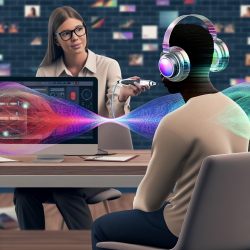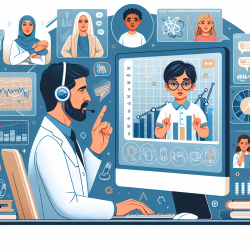Sensor-based technology is revolutionizing the way we understand and support individuals with Autism Spectrum Disorder (ASD). The recent review article "Sensor-Based Technology for Social Information Processing in Autism: A Review" highlights how this technology can enhance both assessment and intervention strategies. Below, we summarize key findings and offer practical insights for practitioners looking to implement these advancements.
Key Findings from the Review
Facial Movements and Eye Gaze
Research shows that individuals with ASD often display unique facial movements and eye gaze patterns. For example:
- Facial expressions in ASD may be more asymmetrical and less intense.
- Eye-tracking studies reveal that children with ASD spend less time looking at the mouth area, which can be an early predictor of ASD.
Practitioners can use these insights to develop targeted interventions that focus on improving eye contact and facial expression recognition.
Vocal Patterns
Studies indicate that vocal markers, such as prosody and vocal stereotypies, can be used to identify ASD. For instance:
- Children with ASD often exhibit atypical prosody, which can be detected using advanced acoustic analysis.
- Vocal stereotypies, like repetitive non-word sounds, can also serve as diagnostic markers.
Incorporating voice analysis tools into your practice can aid in early diagnosis and tailored speech therapy interventions.
Body Movements
Sensor technology has proven effective in identifying stereotypical body movements associated with ASD. Examples include:
- 3D sensors can detect hand-flapping and body-rocking movements with high accuracy.
- Tablet-based assessments can reveal unique gesture patterns in children with ASD.
These tools can be integrated into therapeutic settings to monitor progress and adjust interventions accordingly.
Multimodal Approaches
Combining facial, vocal, and body movement data provides a comprehensive understanding of ASD-related behaviors. For example:
- Multimodal assessments can capture the synchronization of facial expressions, eye gaze, and hand movements.
- These integrated approaches can improve the accuracy of ASD diagnosis and the effectiveness of interventions.
Consider adopting multimodal assessment tools to enhance the depth and accuracy of your evaluations.
Encouraging Further Research
While the current findings are promising, there is a need for more large-scale, systematic research. Practitioners are encouraged to:
- Participate in interdisciplinary research projects to validate and expand upon these findings.
- Advocate for the inclusion of sensor-based technology in standard diagnostic and intervention protocols.
Collaborative efforts can help bridge the gap between technological advancements and practical applications, ultimately benefiting individuals with ASD.
Conclusion
Sensor-based technology offers a powerful toolset for enhancing the assessment and intervention of ASD. By integrating these technologies into your practice, you can make data-driven decisions that lead to better outcomes for children with autism.To read the original research paper, please follow this link:
Sensor-Based Technology for Social Information Processing in Autism: A Review.










